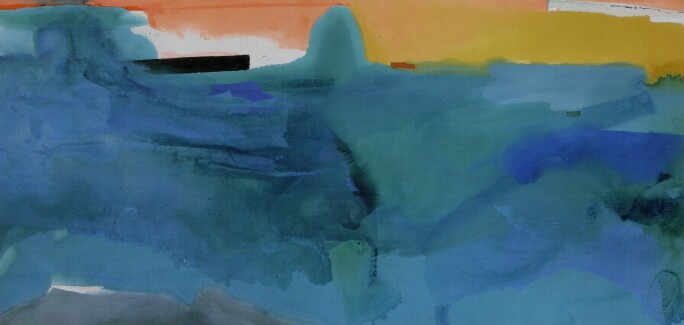About Abstract Expressionism
What is Abstract Expressionism?

Abstract Expressionism describes a style of abstract art developed by a group of primarily New York-based painters in the 1940s and 50s, also known as the New York School. This loosely affiliated band of artists, representing a diversity of practices, were united by a dedication to bold formal invention and a conviction in art as a profoundly personal emotional expression. The Abstract Expressionists sought to transcend the artistic vocabulary of Social Realist and Regionalist conventions, that were popular at the time. Many of the artists associated with the movement came of age during the Great Depression and worked for the WPA Federal Art Project, a government-funded project that supported the visual arts in the United States. Exposure to European modernism – through museum exhibitions, lectures and encounters with émigré artists – set the stage for daring innovation. Surrealism in particular, with its emphasis on the unconscious mind, myth and archetype, was a foundational influence. In the wake of the Second World War, Abstract Expressionists harnessed these modernist tendencies, creating a distinctly American expression of post-war trauma and anxiety.
Characteristics and Style of Abstract Expressionism

Monumental in scale and ambition, Abstract Expressionist painting evokes the distinctly American spirit of rugged individualism. Valuing freedom, spontaneity and personal expression, the movement naturally produced a variety of technical and aesthetic innovations. In general, however, Abstract Expressionism can be clustered around two major tendencies: action painting and color field painting. Action painting, often featuring energetically applied paint – in sweeping gestural brushstrokes, or dripped and splattered with no brushes at all – is both an improvised revelation of the artist’s individual psyche and an exercise in balancing chaos and control. By contrast, the more cerebral discipline of color field painting is characterized by large swaths of color in reductive compositions. Enveloping, meditative, and verging on the sublime, these vast canvases are both authentic and intimate.
Legacy of Abstract Expressionism

The first American artistic movement to achieve international influence, Abstract Expressionism effectively shifted the art world’s focus from Europe (specifically Paris) to New York. The Abstract Expressionists’ dynamism and emphasis on process reverberated across the international stage, with its influence ranging from the Japanese Gutai movement to Viennese Actionism. Pollock in particular, with his reimagining of the canvas as a space in which to act, was an important precursor to the work of Allan Kaprow, Fluxus, and other performance artists. Nearly every American artist maturing in the shadow of Abstract Expressionism’s monumental legacy has been informed in some way by the movement. While the aesthetic and rhetorical tendencies of the Abstract Expressionists are most evident in Post-Painterly Abstraction, Lyrical Abstraction and Neo-expressionism, other artistic styles, such as Minimalism and Pop Art, evolved in direct contrast.
Read LessTimeline & History of Abstract Expressionism
Artists
Who are the Abstract Expressionists?
The most important and influential of the action painters, Jackson Pollock rose to fame in the late 1940s, pioneering a radical technique of dripping and pouring thinned paint onto raw canvas laid flat on the ground. Willem de Kooning’s vigorously charged canvases, loosely based on figurative imagery, are also emblematic of the gestural style. Other exponents included Franz Kline and Robert Motherwell.
Among the color field painters, Mark Rothko, known for his soft-edged rectangles of luminous color, is certainly the most famous; others include Barnett Newman and Clyfford Still.
Although Abstract Expressionism is typically associated with the swaggering machismo of a select group of male artists, there were also several important female artists working in this milieu, including Helen Frankenthaler, Elaine de Kooning, Lee Krasner and Joan Mitchell.
Abstract Expressionists
The Abstract Expressionists at Auction
Have Something to Sell?
Have Something to Sell?
Get Started































